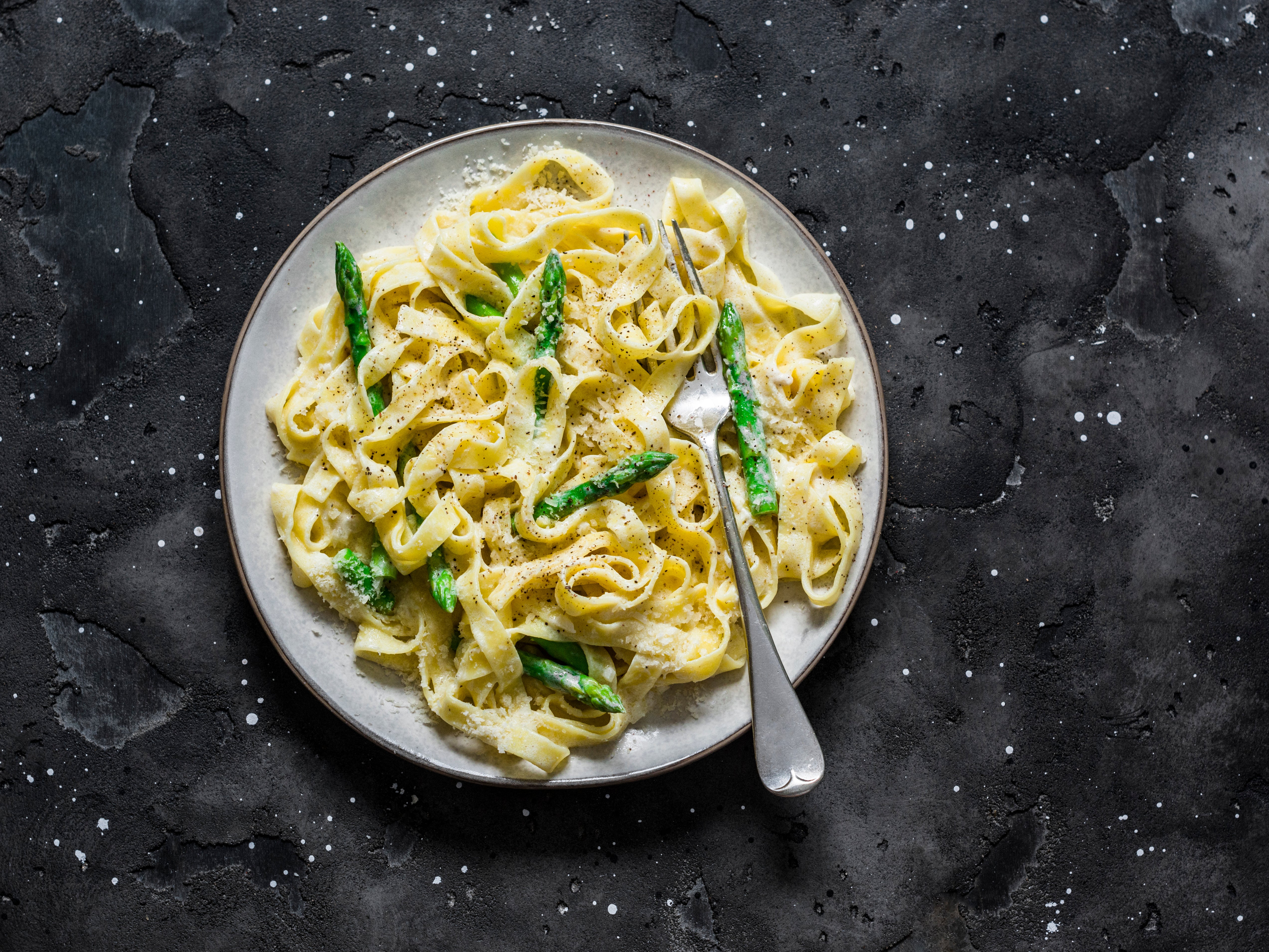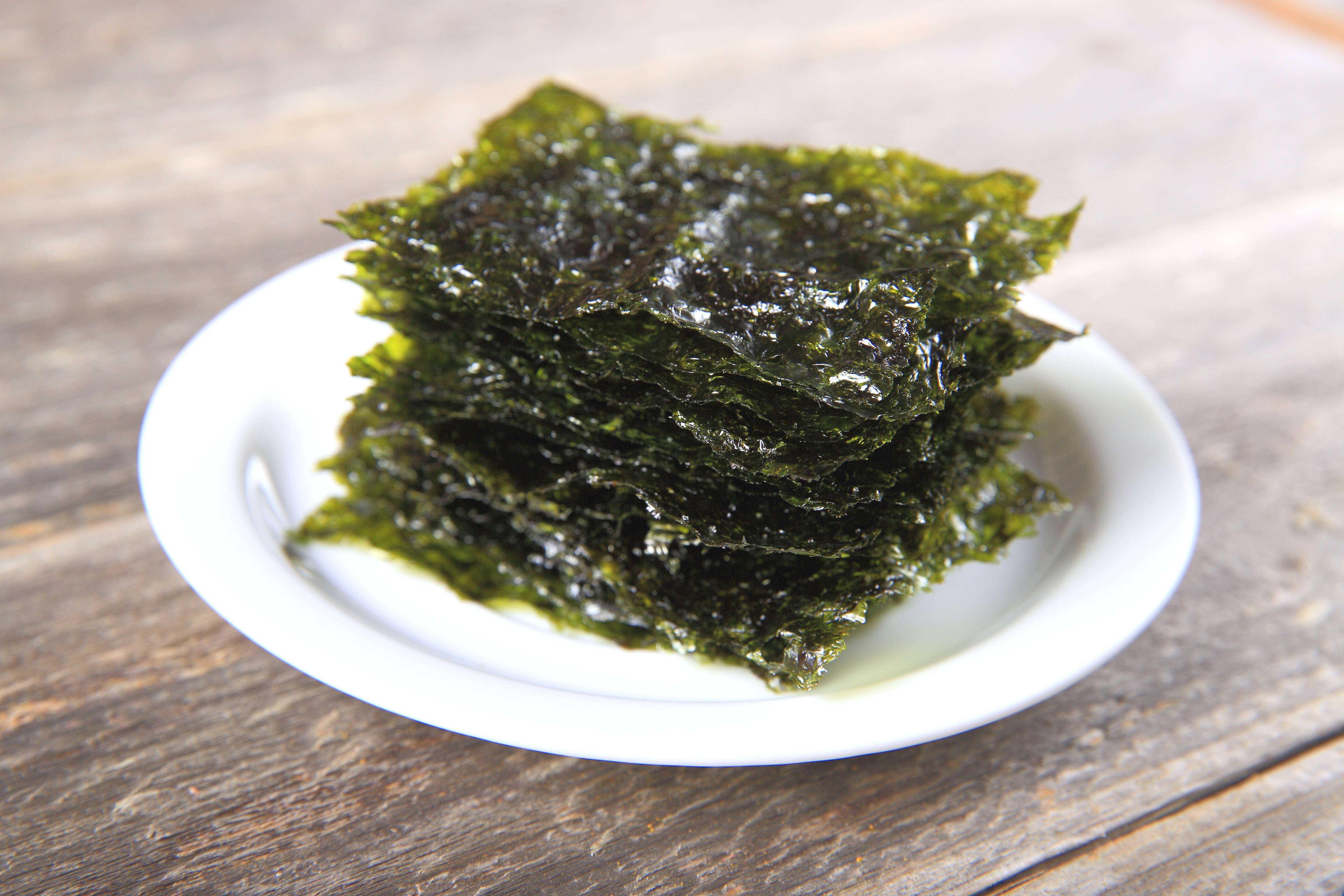Add seaweed to this creamy pasta for an umami bomb
A versatile pantry staple in many cuisines, dried seaweed can lend a quiet savouriness to dishes, like this simple asparagus rigatoni, writes Eric Kim

In 1908, Japanese chemist Kikunae Ikeda discovered that an amino acid called glutamate in kombu, or dried kelp, was responsible for the wonderful savouriness in his wife’s dashi, a stock that forms the basis of many dishes including miso soup, shabu shabu and okonomiyaki.
Because that unique flavour was not salty, sweet, sour or bitter, Ikeda called this fifth taste “umami”, which roughly means “essence of deliciousness”. There is no perfect English translation.
Today, when we talk about umami in home cooking, we often think of the loud, tongue-latching savouriness of, say, a tomato sauce imbued with anchovies or deeply caramelised onions. Meatiness also comes to mind, appropriately: umami is a specific taste that our tongues perceive when coming into contact with foods rich in glutamates, like grilled steak. It is found in dishes anchored to miso, mushrooms and fish sauce as well, where it detonates with the kind of big flavour that’s a reminder of the inherent goodness of eating.
But one thing to know: umami doesn’t always land like a bomb.
Read more:
Sometimes, it’s quiet and fuzzy at the edges, like a good sweater. Taste its subtlety in green vegetables like spinach, broccoli and asparagus, or in leafy kale, roasted until crisp like potato chips. The soft umami of dried seaweed – as in a well-balanced dashi – floats on the tongue with gentle savouriness. Salt can help accentuate its very best features.
In Korean cooking, kelp is essential to building layers of umami, the zephyrlike kind that lingers. Rife on the shores of the Korean Peninsula, seaweed is harvested, then sold in many forms – especially raw, dried and roasted – and can increase the glutamate quotient in certain beloved dishes.
In Korean cooking, kelp is essential to building layers of umami, the zephyrlike kind that lingers
Dried seaweed is rehydrated into long, diaphanous tangles for miyeokguk, a soup traditionally boiled for birthdays as often as it is on weeknights. Jumeokbap, which translates to “fist rice”, are soul-soothing, seaweed-flecked rice balls that can relieve a tired parent trying to feed a picky child. Dasima (also Romanised as dashima and known as kombu in Japanese) is a dried kelp product that Korean cooks boil with anchovies to make an umami-rich stock called yuksu.
In this pasta dish, thick tubes of chewy rigatoni are boiled in a quick dasima yuksu, which both seasons and thickens the cream sauce at the end of cooking. Onyx-black filaments of gim (sometimes spelled kim), or Korean roasted seaweed, are often sold shiny with sesame oil and sprinkled with salt as ready-to-eat banchan or snacks. Showered over the finished pasta, gim adds a nutty, saline note – an indelible savoury quality – that takes the feel and flavour of this dish into shrimp Alfredo territory.
In fact, you could add shrimp if you’d like, or even a dribble of fish sauce. But asparagus, a particularly umami-rich vegetable, is just perfect with the pasta by itself. When umami quietly hums like that, full of nuance, each comforting bite builds upon the last. It’s hard to translate that sensation into words, but “flavour balm” comes close.

Creamy asparagus pasta
Makes: 4 servings
Total time: 30 minutes
Ingredients
20g gim, often labelled as roasted seaweed
2 10cm squares dasima or kombu (dried kelp)
1tbsp salt
450g rigatoni
350ml heavy cream
1 small red onion, halved and thinly sliced
2 large garlic cloves, finely grated
1tsp freshly ground black pepper, plus more to taste
1tsp rice vinegar
225g asparagus, thinly sliced at an angle
1tbsp toasted sesame oil
Flaky sea salt, for serving
Method
1. Fold the gim in half and, with very sharp kitchen shears or a chef’s knife, slice into thin strips. Set aside for serving.
2. In a large pot, combine 1 dasima square with 1.9L cold tap water. Bring the water to a boil and season with the salt. Tumble in the pasta and cook for half the time the package tells you is al dente. Reserve 235ml of the pasta water. Drain the pasta, then add it back to the pot. Discard the dasima.
3. Add the remaining dasima square, cream, red onion, garlic, black pepper and reserved pasta water to the pasta. Bring to a boil over high heat, then immediately reduce the heat to a gentle simmer. Stirring occasionally, cook the pasta until the onion-infused cream has thickened significantly, thinly coating the noodles, 4 to 5 minutes.
4. Turn off the heat. Add the vinegar and asparagus, and stir to combine for 1 minute. The residual heat from the pasta will gently cook the asparagus to tender-crisp. Stir in the sesame oil and season with more black pepper, if desired. Divide the pasta among serving dishes, discarding the dasima, and shower with the reserved gim and sprinkle with flaky sea salt. Serve immediately, before the gim wilts and turns soggy.
Read more:
And to drink...
The complex flavours of this dish, combining creaminess, umami and the slightly bitter pungency of asparagus, require an incisive white wine, with little discernible oak, as the tannins will clash. That leaves many options. Grüner veltliner and sauvignon blanc are classic accompaniments to asparagus, although if I were picking a sauvignon blanc I would aim for a restrained version. A village-level Chablis would be delicious, as would unoaked chardonnays. You could try an aligoté from Burgundy, too. Numerous Italian whites would be good choices, like vermentinos from Liguria or verdicchios from the Marche region. Sparkling wines like Champagne or those made similarly, like cava or many American sparklers, would be great. As a wild card, consider fino sherry, which is often superb with dishes rich in umami. – Eric Asimov
© New York Times
Join our commenting forum
Join thought-provoking conversations, follow other Independent readers and see their replies
Comments